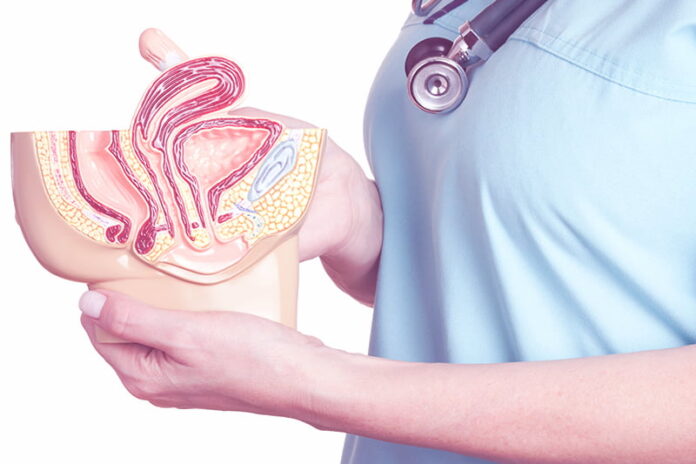Uterus disease is one of the most common female reproductive system disorders. The symptoms of uterus disease can vary depending on the type of disease and its severity. It is important to be aware of the different symptoms of uterus disease so that you can seek treatment early.
If you experience pain during menstruation, difficulty using tampons during menstruation, or urinary incontinence, you may have a retroverted uterus. The condition affects roughly 10 percent of women. Fortunately, the symptoms of a retroverted uterus are often treatable or even preventable with proper care and attention to certain lifestyle choices.
Pain during menstruation
A retroverted uterus can cause pain during menstruation. This is because the uterus is tilted backward, pressing against other organs and making it difficult for menstrual blood to flow out of the body.
So, women with a retroverted uterus often experience pain during menstruation. The severity of this pain can vary from mild to severe, with some women feeling it only in their lower abdomen and others experiencing it all across their body.
Pain in the lower back and hips is common, as well as pain in the thighs and groin area. Some people also report that they feel pain during intercourse when their uterus is turned backward.
Pain during sex
Pain during sex is the most common and obvious symptom of a retroverted uterus. Pain may be mild or severe, and it can be felt deep in the pelvis, just inside the vagina on one side of your pelvis, or both.
The pain can range from uncomfortable to sharp, stabbing, burning, or cramping. Women with this condition often experience pain during intercourse if they do not use sufficient lubrication before penetration.
As such, women should always use plenty of water-based lubricants when having sex with a partner who has a retroverted uterus.
Trouble using tampons during menstruation
Although it might seem like a good idea to switch to tampons when your period comes, that’s not necessarily the case. Tampons aren’t recommended for women with retroverted uteruses because they can push the uterus further into the body and cause more pain.
Instead of using a tampon, use a pad during menstruation. If you’re worried about leakage, choose a pad with wings or try using one size down from what you normally wear.
These will help prevent leaks from occurring due to the shape of your body while also providing extra protection against leaks that may occur if you move around or change positions throughout the day.
Urinary incontinence
Urinary incontinence is a common condition that affects many women. The symptoms include leaking urine when you cough, sneeze or laugh. It can also be caused by pelvic floor dysfunction due to childbirth or aging.
A retroverted uterus may also be the culprit in some cases of urinary incontinence. If you have recurring bladder leaks and suspect that your uterus is positioned backward instead of forward, see your doctor for further examination and treatment options such as surgery or medication.
Learn more about retroverted uterus symptoms and when to see a doctor.
If you experience any of these symptoms, it is important to see a doctor. Your doctor can perform an internal exam and help determine if your uterus is retroverted.
A gynecologist will also be able to prescribe medications that may help alleviate pain during sex or painful menstrual periods. If you are experiencing any of the above symptoms, consult with your doctor immediately, as they could be signs of other health issues such as endometriosis or pelvic inflammatory disease (PID).
Final Thoughts
Once you’ve had a conversation with a doctor, they will be able to help you decide what the best course of action is for your body.
If your symptoms are severe enough, they may recommend surgery. But before that happens, make sure that both you and your doctor have done everything possible to try some less invasive options first.
Read Also
- The Future of Men’s Health: Why Telehealth Is Here to StayTelehealth isn’t just a pandemic trend that faded into the background. For Australian men, it has become one of the most practical, time-saving, and stress-free ways to manage everyday health — and it’s shaping the future of how we access care. Platforms like DOCTO, an Australian online doctor and specialist telehealth service, are leading the… Read more: The Future of Men’s Health: Why Telehealth Is Here to Stay
- How to Build a Simple, Clean Skincare Routine ?You don’t need a complicated skincare routine. It doesn’t have to be something that requires twenty different products and confusing steps. Your routine works well with just a few high-quality clean ingredients. The beauty industry keeps pushing more products, but your skin actually needs less. You only need a simple approach to get better results… Read more: How to Build a Simple, Clean Skincare Routine ?
- How Preventive Dental Care Supports Overall HealthHave you ever wondered how a simple dental checkup could impact your entire body? Oral health is more than just a bright smile. Studies show that poor dental habits can contribute to serious health problems. Gum disease and tooth decay are linked to heart disease, diabetes, and infections. Yet, many people overlook preventive dental care.… Read more: How Preventive Dental Care Supports Overall Health
- Seeing Clearly in a High-Tech World: A Deep Dive into Advanced Vision Care ServicesProtecting your eyesight isn’t optional—it’s essential. Modern eye care has evolved far beyond basic exams, offering advanced diagnostics, personalized treatments, and surgical innovations that keep vision sharp for life. A leading example is Intermountain Eye Center, home to specialists like Dr Fishburn Boise, where patients receive comprehensive, high-level vision care designed to preserve long-term eye… Read more: Seeing Clearly in a High-Tech World: A Deep Dive into Advanced Vision Care Services
- Why the Keto Diet Works for Some People—and Fails Dramatically for Others: An Ayurvedic Breakdown for Modern HealthcareThe keto diet has dominated weight-loss culture for years. For some people, it produces rapid fat loss, stable energy, and improved mental clarity. For others—especially those who gain weight easily—it leads to burnout, digestive distress, rebound weight gain, high cholesterol, and a metabolism that feels slower than before. Healthcare often frames this as a discipline… Read more: Why the Keto Diet Works for Some People—and Fails Dramatically for Others: An Ayurvedic Breakdown for Modern Healthcare






